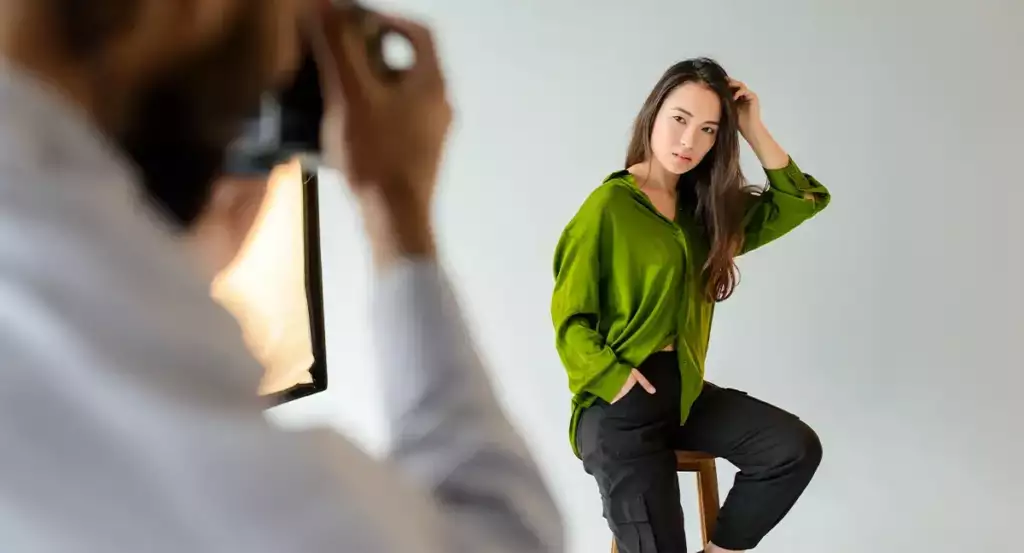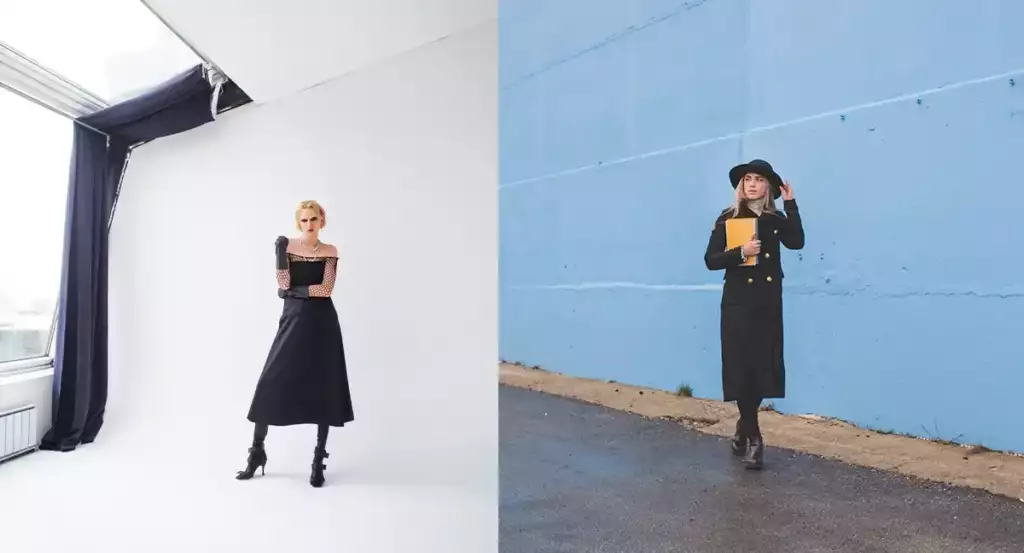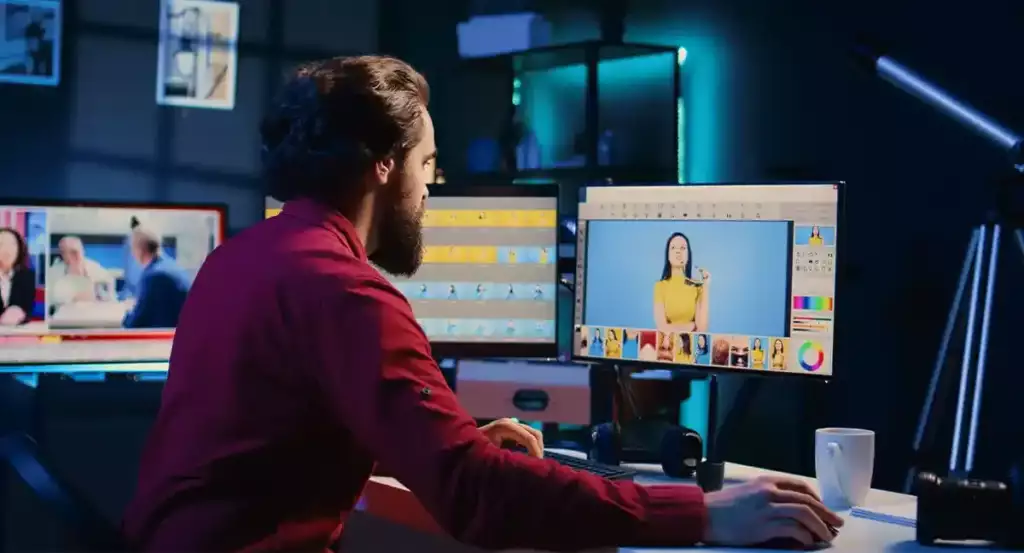
Best Practice to Plan a Model Photoshoot Outfits for Your Clothing Brand
Best Practice to Plan a Model Photoshoot Outfits for Your Clothing Brand
As a clothing brand owner you are very well aware about the significance of a well-planned model photoshoot, especially when selecting right model photoshoot outfits. It reflects your brand identity and shapes consumer perception. In today’s competitive fashion industry, high-quality visuals can make or break your brand’s image. This guide will walk you through the best practices to ensure your photoshoot aligns with your brand’s vision, helping you create compelling ecommerce content that lives upto the expectations of your target audience and drives engagement.
1. Understanding Your Brand Aesthetic
Your brand aesthetic is the foundation of any successful photoshoot. Before diving into logistics, it’s essential to have a clear understanding of your brand’s unique selling points (USPs) and target audience. Your brand’s aesthetic is the visual language that communicates your values, style, and personality to consumers. It’s what makes your brand recognizable and appealing.
- Defining Your Brand’s Aesthetic
Begin by identifying the core elements of your brand’s visual identity—color schemes, textures, and themes that resonate with your brand message. This should also extend to the selection of model photoshoot outfits, ensuring they align with your overall aesthetic. For instance, if your brand is eco-friendly, your aesthetic might include earthy tones, natural settings, and sustainable materials. On the other hand, a luxury brand may focus on sleek designs, high-end locations, and sophisticated styling. - Aligning Your Photoshoot with Brand Aesthetics
Once your aesthetic is defined, ensure that every aspect of your photoshoot—from model selection to model photoshoot outfits to location—aligns with this visual identity. Consistency is key in creating a cohesive brand image. Top fashion brands maintain a strong visual identity across all platforms, reinforcing their brand message and building trust with their audience.
2. Setting Clear Objectives for the Photoshoot
A successful photoshoot starts with clear objectives. Understanding the purpose of your shoot helps guide the creative process and ensures that the final product meets your brand’s needs.
- Determining the Purpose of the Photoshoot
Is this photoshoot for a new collection launch, social media content, or website imagery? Each purpose requires a different approach. For instance, a collection launch may need more dramatic, editorial-style photos, while social media content might focus on lifestyle images that show your products in everyday use, with carefully chosen model photoshoot outfits that reflect your brand’s aesthetic.
- Setting Measurable Goals
Along with defining the purpose, set measurable goals to gauge the photoshoot’s success. These could include increasing website traffic, boosting social media engagement, or improving conversion rates. By having clear, measurable objectives, you can better assess the effectiveness of your photoshoot and make data-driven decisions in the future.
3. Choosing the Right Models
Model selection is critical to the success of your photoshoot. The models you choose should resonate with your brand’s target audience and reflect the diversity and inclusivity that today’s consumers expect.
- Selecting Models Who Resonate with Your Audience
Choose models who embody your brand’s values and appeal to your target demographic. For example, if your brand caters to a young, edgy audience, consider models with a modern, alternative look, complemented by model photoshoot outfits that enhance this vibe. Conversely, a classic, high-end brand might opt for models with a more timeless, elegant appearance, paired with sophisticated attire that reflects the brand’s prestige.
- Incorporating Diversity and Inclusion
Diversity in model selection is not just a trend—it’s a necessity. Today’s consumers want to see brands that represent a range of ages, ethnicities, body types, and genders. By incorporating diverse models you show that your brand is inclusive and appeals to a broader audience.
- Case Studies of Successful Model Selection
Look at brands that excel in model selection, such as those that have embraced diversity and built a loyal customer base as a result. Brands like Aerie, for example, have seen success by promoting body positivity and featuring models of different sizes and shapes, all dressed in model photoshoot outfits that highlight their individuality.
4. Planning the Location and Setting

The location of your photoshoot is just as important as the models. It sets the tone for the entire shoot and can either enhance or detract from your brand’s aesthetic.
- Choosing the Right Location
When selecting a location, consider how it aligns with your brand’s aesthetic and the story you want to tell. A rustic, outdoor setting might be perfect for a bohemian brand, especially when paired with model photoshoot outfits that reflect a carefree, natural vibe. On the other hand, a sleek, urban environment could suit a modern, minimalist label, with outfits that emphasize clean lines and contemporary style. Whether you choose an indoor or outdoor location, ensure that it complements your clothing line and adds to the overall visual appeal.
- Indoor vs. Outdoor Photoshoots
Each type of location has its pros and cons. Indoor photoshoots offer more control over lighting and environment but may lack the natural appeal of outdoor shoots. Outdoor locations provide a dynamic backdrop but can be subject to unpredictable weather and lighting conditions. Weigh these factors carefully, when planning your shoot.
- How to Ensure the Setting Complements Your Clothing Line
The setting should enhance, not overpower, your clothing. For example, if your collection features bold, vibrant colors, a neutral backdrop may work best to let the model photoshoot outfits stand out. Conversely, a more subdued clothing line might benefit from a more dynamic or textured background that adds depth to the overall visual narrative.
5. Collaborating with a Professional Team
A successful photoshoot requires a team of professionals who can bring your vision to life, especially when it comes to showcasing clothing brand effectively. From photographers to stylists, each team member plays a crucial role in the process.
- Roles of Photographers, Stylists, and Makeup Artists
The photographer is responsible for capturing your brand’s vision through the lens, ensuring that the model photoshoot outfits are highlighted in the best possible way. A skilled photographer knows how to use lighting, angles, and composition to make your clothing stand out. Stylists play a key role in ensuring that the outfits are presented impeccably, with every detail in place. Makeup artists enhance the models’ features and ensure they look their best on camera, complementing the outfits and overall aesthetic.
- Tips for Selecting the Right Team
When choosing your team, look for professionals with experience in fashion photography and styling, particularly those who have worked with clothing brands similar to yours. Review their portfolios to ensure their work aligns with your brand’s aesthetic. Clear communication is also key—ensure that everyone understands your vision and objectives for the shoot.
- Budgeting for a Professional Photoshoot
While a professional team can be costly, it’s an investment in your brand’s image. Budget for each aspect of the photoshoot, from the photographer to post-production, and allocate resources accordingly. Cutting corners on professional services can result in lower-quality images that don’t reflect your brand’s true potential, especially when it comes to showcasing your model photoshoot outfits.
6. Creating a Detailed Shot List
A shot list is an essential tool for ensuring that your photoshoot runs smoothly and efficiently. It helps prioritize the key shots that need to be captured and ensures that no important details are overlooked.
- Importance of a Shot List
A well-prepared shot list keeps the photoshoot on track and ensures that all necessary images are captured. It outlines each shot’s specifics, including the model, wardrobe, location, and any props or poses required. This level of organization helps avoid confusion and saves time during the shoot.
- How to Prioritize Key Shots
Identify the most important images you need to capture—whether they’re hero shots of your best-selling model photoshoot outfits or lifestyle images that tell a story. Prioritize these shots to ensure they’re completed first, before moving on to less critical images. - Examples of Effective Shot Lists
An effective shot list might include a mix of wide shots, close-ups, and detail shots. For example, a wide shot might showcase an entire model photoshoot outfit, while a close-up focuses on a specific feature, like the texture of a fabric or a unique design element. Detail shots can highlight accessories or the fine craftsmanship of your clothing, adding depth and variety to your visual content.
7. Wardrobe and Styling Considerations
The wardrobe and styling are at the heart of your photoshoot. They should showcase your clothing line in the best possible light and be carefully coordinated to enhance the overall visual appeal.
- Ensuring the Wardrobe Reflects Your Latest Collection
Choose model photoshoot outfits that represent the essence of your current collection. Highlight key pieces and ensure that they’re styled in a way that aligns with your brand’s aesthetic. This not only showcases your products but also creates a cohesive visual narrative.
- Tips for Effective Styling
Effective styling goes beyond simply putting outfits together. Consider how the model outfits will look on camera, how they move, and how they interact with the setting and props. Accessories, footwear, and even hair and makeup should be coordinated to create a complete look that’s visually appealing and on-brand.
- Coordinating Outfits with Props and Backgrounds
Props and backgrounds should complement the model outfits, not compete with them. For instance, if you’re shooting a summer collection, props like sunglasses, beach towels, or a tropical backdrop can enhance the summery vibe. Ensure that everything in the frame works together to create a harmonious image.
8. Lighting and Technical Setup
Lighting is one of the most critical aspects of a photoshoot, especially when showcasing model photoshoot outfits. It affects the mood, tone, and overall quality of your images. Understanding how to use lighting effectively can elevate your photoshoot and make your clothing line stand out.
- Impact of Lighting on Photos
Good lighting can transform an ordinary image into something extraordinary. It can highlight the details and textures of outfits, create depth, and enhance colors. Poor lighting, on the other hand, can make clothing appear flat, dull, or unappealing.
- Different Types of Lighting Setups
There are several lighting setups you can use, depending on the desired effect. Natural light is soft and flattering, ideal for lifestyle shoots featuring model photoshoot outfits, while studio lighting offers more control and can be tailored to create specific looks. You can also experiment with different light sources, such as ring lights for even lighting or softboxes for a more diffused effect, to best highlight your outfits.
- Technical Tips for Best Results
When setting up your lighting, consider the time of day, the direction of light, and how it interacts with your clothing brand. Always test your setup before the shoot to ensure everything looks as intended. Adjustments may be needed to achieve the desired effect, such as moving lights closer for more intensity or diffusing them for a softer look, to perfectly showcase your clothing line.
9. Post-Production and Editing

Post-production is where your images are refined and polished, especially when showcasing model photoshoot outfits. It’s an essential step in ensuring that your photos look their best and are consistent with your brand’s aesthetic.
- Importance of Post-Production
Even the best-shot photos can benefit from post-production. Editing can correct any minor flaws, enhance colors, and ensure that all images, including those featuring model photoshoot outfits, have a consistent look. This step is crucial in creating professional-quality images that reflect your brand’s high standards.
- Common Editing Techniques
Some common editing techniques include color correction, retouching, and cropping. Color correction ensures that the colors in your images are accurate and consistent across all photos. Retouching can remove any imperfections, such as wrinkles in model photoshoot outfits or blemishes on models, while cropping helps focus attention on the most important parts of the image.
- Ensuring Consistency Across All Photos
Consistency is key in post-production. All images should have a similar look and feel, which helps reinforce your brand’s visual identity. This might involve applying the same filters, color grading, or retouching techniques to each photo. Consistent editing ensures that your final images, particularly those of model photoshoot outfits, look polished and professional.
10. Leveraging Photos for Marketing
Once your photoshoot is complete, it’s time to leverage your model photoshoot outfits across various marketing channels. High-quality photos can be used to boost your brand’s visibility and engagement on multiple platforms.
- Using Photos Across Various Platforms
Your photos featuring model photoshoot outfits can be used on your website, social media, email marketing campaigns, lookbooks, and more. Each platform may require different image formats or dimensions, so ensure your photos are optimized accordingly. For example, Instagram may require square images, while your website’s banner might need a wide, horizontal shot.
- Optimizing Images for SEO
Image optimization is crucial for improving your website’s search engine ranking. Use descriptive file names, alt text, and captions that include relevant keywords, such as “model photoshoot outfits.” Compress your images to reduce file size without compromising quality, which can improve your website’s load time—a factor that search engines consider in their rankings.
- Measuring the Impact of Your Photoshoot
After your photos featuring model photoshoot outfits have been published, track their performance across different platforms. Metrics such as website traffic, social media engagement, and conversion rates can give you insight into the effectiveness of your photoshoot. Use this data to refine your strategy for future shoots.
Conclusion
Planning a model photoshoot for your clothing brand requires careful preparation and attention to detail, especially when selecting model photoshoot outfits. From understanding your brand’s aesthetic to choosing the right models and perfecting post-production, every step is crucial in creating visuals that resonate with your audience. By following these best practices, you can ensure that your photoshoot not only meets but exceeds your brand’s expectations, ultimately contributing to your brand’s success in the competitive fashion industry. Remember, investing time and resources in a well-planned photoshoot is an investment in your brand’s image and future growth.

